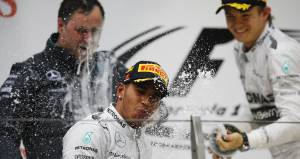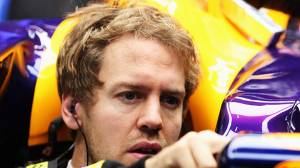2014 Formula 1 Preview: Rules and regulations explained
Back in the day, there was a time when drivers raced Formula 1 cars on tracks with little or no safety. Seatbelts weren't in vogue, half faced helmets and goggles were the norm, and going racing meant you risked your life every single time you got into the car. As time wore on though, and speeds increased, there was a concerted effort to make the sport safer, which meant that the FIA made some pretty drastic changes to the rules and regulations of the sport. For 2014 though, the rules and regulations are only partly aimed at making the sport safer. The rest of the rule changes are directed primarily towards making Formula 1 head down a greener path. Before the five red lights go out in Australia, here's what you need to know about the new rules and regulations:
The 2014 engines
Â
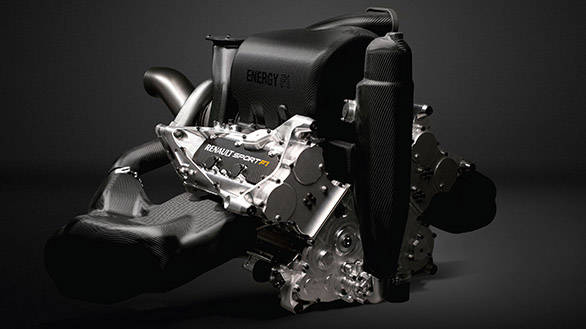
- 1.6 - litre V6 turbo - the new direction in Formula 1
There is a drastic change in the design of the power mills for the 2014 F1 cars. Given that the auto industry is gravitating towards smaller turbocharged engines, Formula 1 is heading the same way. The new 'formula' so to speak now entails 1.6-litre V6 turbocharged powerplants. The engine is said to produce 600PS and is limited to 15000rpm. So will the cars now run like road going sportscars? Well, not quite â" they will certainly be much faster than we can visualize, and the times in testing prove that too. This is because the engine is allied to an Energy Recovery System (ERS) which is leaps ahead of the now defunct sole KERS system, and produces 160PS, to take the total power figure up to 760PS. To get a complete understanding of exactly how the new 2014 engines and ERS work read our detailed story here.
New power plant
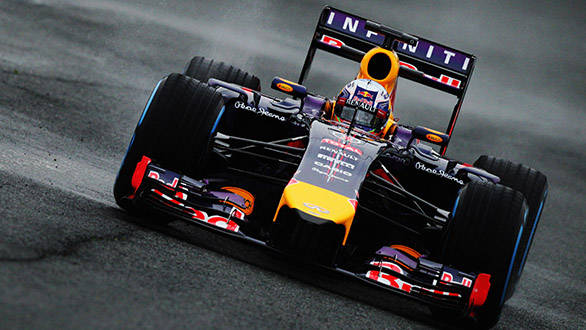 Red Bull have consistently struggled all through preseason tests with the Renault powerplant
Red Bull have consistently struggled all through preseason tests with the Renault powerplant
Reliability will be a major challenge for the teams especially considering the complications that are accompanied with any new technology. Last year a driver could use eight engines before incurring a penalty. This year though a power unit along with the engine includes the turbocharger, the motor generator unit-kinetic (MGU-K), the motor generator unit-heat (MGU-H), the energy store (ES) and the control electronics. If a driver uses more than five of any of these components in a season, he is liable to face the penalty ranging from a five-place grid demotion to a pitlane start.
Fixed ratios
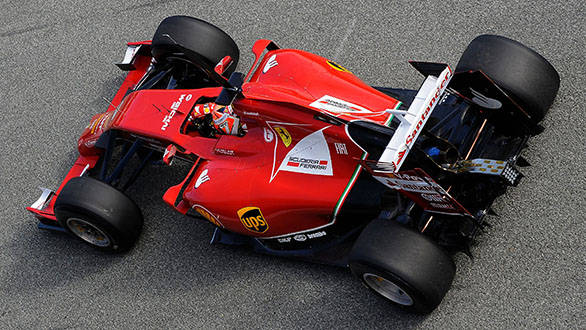 Ferrari seems to have a reliable package, but lacked the outright pace of Mercedes during preseason tests
Ferrari seems to have a reliable package, but lacked the outright pace of Mercedes during preseason tests
Each driver is supposed to use one gearbox for at least 6 consecutive races, failing to do so (in case of unscheduled replacement), will attract a five-place grid penalty for that race. Teams can use eight gear ratios in their gearboxes this season, this is one up from last year, though the gear ratios once selected are fixed for the rest of the season. This is unlike last year when teams could choose between thirty gear ratios for the season and use any seven for the race. For this season, teams are allowed to change the ratios just once more, on the off chance that they goof up badly in their first attempt. Teams may change the gears or the dog rings any time during the season provided FIA technical delegation agrees that the part is sufficiently damaged for replacement.
More math in penalties
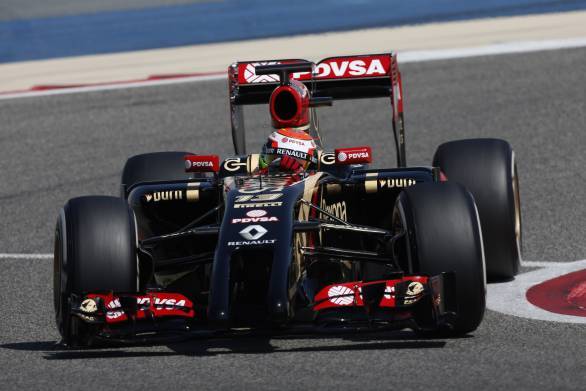 Lotus has managed to do decent test runs compared to other Renault powered cars after they missed the Jerez test
Lotus has managed to do decent test runs compared to other Renault powered cars after they missed the Jerez test
An interesting part of this season is the manner in which penalties will be imposed upon drivers now on. If a driver has not completely used up his penalty for that race, the remainder will be carried over to the next race. For example if a driver incurs a five-place grid penalty, and qualifies 19th on the grid, he will drop down to 22nd for that race, i.e. he has used up only three of the incurred five-place penalty, so the remaining two places will be carried over to the next race.
Weights and limits
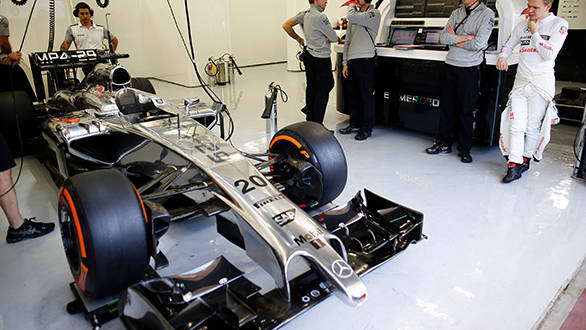 McLaren have performed decently in the tests, they were in a more miserable position last year
McLaren have performed decently in the tests, they were in a more miserable position last year
The minimum weight of the car has been increased from 642kg to 691kg (without fuel) this year. As is evident, this will take care of the weight of new components added to the power plant. The maximum fuel that a car can carry for a race is limited to 100kg now, and the fuel flow rate to the engine is restricted to 100kg/hr. No such limitations were in place last year, and the cars would carry approximately 160kg of fuel for the race. This will play a huge role in deciding race strategies and the manufacturer with the most frugal engine will definitely benefit from it.
Reduced downforce
New rules are shaping aerodynamics, too, this year. The front wings will be narrower â" going from 1800mm to 1650mm; this move will reduce punctures caused by the end plates damaging tyres of a competitor's car. Incidents like this would usually occur at the start of the race, when all cars barrel into the first corner. The new design as a result will affect the air flow as previously the engineers were able to direct the air around the front tyres with the help of wide wings. This year though, they will have to find a way to direct some air between the front tyre and the chassis to the rest of the car's body.
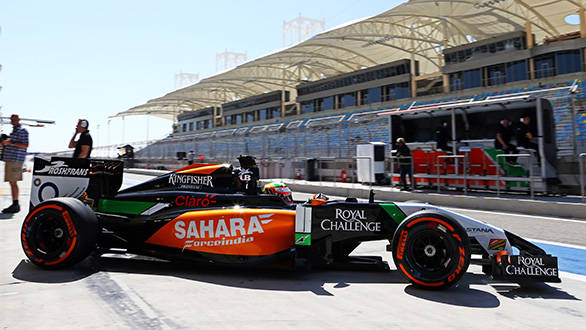 Force India started from where they had left last season, VJM07 has met team's expectations during the preseason tests
Force India started from where they had left last season, VJM07 has met team's expectations during the preseason tests
The rear wing has been made narrower too, with shallower rear wing flaps; this is due to the reduction in the virtual space by 20mm, where the rear wing fits. This will reduce some downforce as a result. Also banned are the wing beams, the aero part that improves diffuser efficiency and was in the past used by many teams as a downforce generating wing itself. Teams are looking to regain lost downforce as a result by designing rear suspension elements as aero parts. It will be interesting to see which team makes the most out of it. On a brighter note, the DRS flap can now open as wide as 65mm, 15mm wider than last year. This should ensure that DRS still remains an effective overtaking aid in this new era.
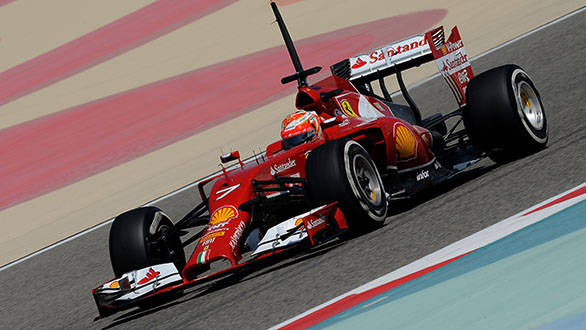 Lowered chassis and the nose end of the new Ferrari F14T
Lowered chassis and the nose end of the new Ferrari F14T
Chassis height has been reduced from 625mm to 525mm, though there is an even more dramatic change in the nose height from 550mm to 185mm. This is purely for safety reasons, in order to prevent cars from launching upwards in case they rear-end the car in front. Remember the rocket ship Red Bull of Mark Webber taking off in Valencia in 2010? The dramatically lowered nosecone has also heavily affected the appearance of the 2014 cars, but it has more significantly affected the aero at the front. Teams have designed very unique and, let's face it, mostly ugly nosecone for their cars with the sole purpose of improving airflow under the chassis. The suspension geometry has also changed as a result, and many teams are opting for a pullrod suspension for its sheer aerodynamic advantages in the new lowered chassis.
Simpler exhaust
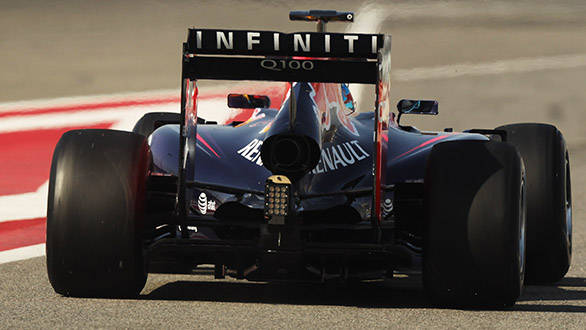 Single exhaust outlet in the Red Bull RB10 as governed by the new regulation
Single exhaust outlet in the Red Bull RB10 as governed by the new regulation
For the past three years more work has gone into directing exhaust gases to the rear end than any other aspect on the car. The "Coanda effect" or the "blown diffuser" is as familiar a term to the sport as, let's say, the name Sebastian Vettel. But gone are the days when engineers could divert the hot exhaust gases into the rear diffuser to gain downforce, as the new regulations stipulate a single exhaust tailpipe that exits centrally behind the rear wheel centreline. Red Bull may feel the heat because they had mastered the art of playing with the exhaust, and downforce at slow-speed turns was their main weapon.
There's more
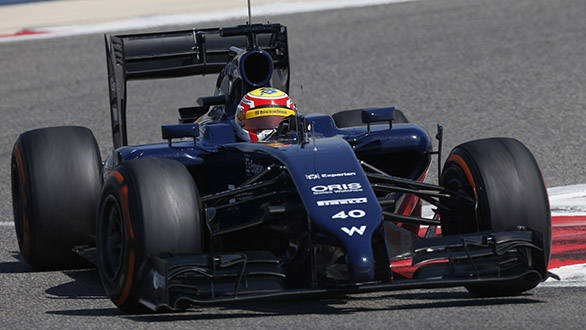 Williams have recovered well from their worst ever last season, their new car FW36 looks promising
Williams have recovered well from their worst ever last season, their new car FW36 looks promising
Other rule changes for the 2014 season include some rather unusual caveats that the FIA has put in place. For example, and this is a rule change that has met with mixed reactions, the final race of the 2014 season will now count towards double points in order to keep the championship battle alive till the very last race of the season.
A rule that has met with considerable favour, though, is that of permanent driver numbers. Each driver can choose a race number that will remain his for the duration of his career in Formula 1.
The FIA has also introduced a Pole Trophy, which is a non-championship trophy that will be awarded to the driver who scores the most number of pole positions over the season.
After four years of Red Bull domination, the 2014 rule changes are proving to be quite a fillip. The new rules have already brought a new direction to the sport. And the scepticism in the air will only dissolve once the circus heads to Melbourne, Australia for the first grand prix on 16, March 2014. Â We can't wait for those five red lights to go out!
